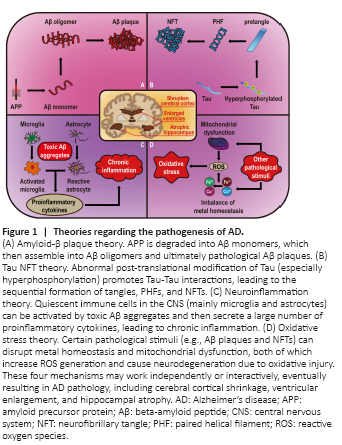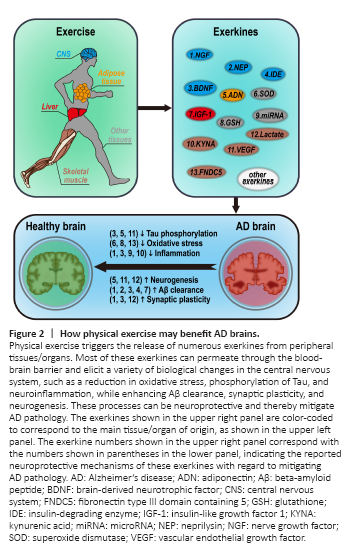神经退行性病
-
Figure 1|Theories regarding the pathogenesis of AD.

The pathogenesis of AD is complex and involves multiple interrelated processes. To date, there are four more or less accepted theories of AD pathogenesis that emphasize the potential involvement of beta-amyloid peptide (Aβ) plaques, Tau NFTs, neuroinflammation, and oxidative stress (Figure 1).
Figure 2|How physical exercise may benefit AD brains.

As mentioned above, exerkines are potentially the most important factors mediating the neuroprotective effects of exercise. Physical activity triggers the upregulation of exerkines in diverse tissues that directly or indirectly mitigate AD pathology through a series of biological processes illustrated in Figure 2. We classify these exerkines into four categories: growth factors and hormones, enzymes and coenzymes, metabolites, and miRNAs. In this section, we elaborate on the potential roles that exerkines play in ameliorating AD.